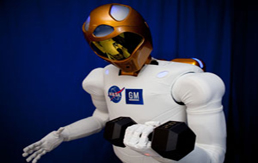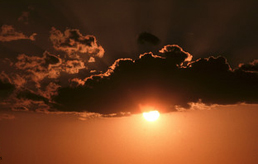Space Roundup
Solar technology could come in handy if a dangerous meteor is ever headed for earth.

Scientists have found a previously undiscovered meteorite impact crater using Google Earth.
Giving spacecraft a running start on a long rail may significantly reduce launch costs.

SPACE UPDATE: NASA prepares to launch a human-like robot into space, engineers are designing a more efficient system for launching payloads into orbit, why microwaves aren't as dangerous as some people think, and the physics behind the color of clouds.

AIR & SPACE: The moon is shrinking - slowly, astronomers discover a solar system similar to our own, exploring the moons of Jupiter, how satellite-based mapping programs can help during natural disasters, and why clouds have distinct borders.
Designing instruments for planned missions to explore Jupiter's many moons requires a combination of scientific acumen and engineering skill.
TECHNOLOGY UPDATE: Ecologically-friendly plastic, a cleaner way to produce hydrogen fuel, cell phone air sensors, the perils of spaceflight, the ethical implications of synthetic life, and more.
The world's strongest insect, why showering could pollute, tests that fail the grade and sampling the early solar system.
Brief glints of light reflected from distant planets may reveal the presence of liquid water or ice.
Ancient volcanoes found on the planet mercury challenge assumptions about the planet's chemical composition.
Mountaintop removal mining's devastating effects on the environment, ancient Martian lakes, an herbal disappointment, fish that punish cheaters, and reading and writing in the brain.
People with Alzheimer's disease get less cancer, nearsightedness is on the rise in the U.S., why the bones of the skull don't become brittle, and how an ingredient in clown make-up could protect astronauts from radiation.
The main ingredient in clown makeup is being used to create a nano-material that could protect astronauts from solar radiation.
Satellite imagery helps human rights teams assess destruction in war-torn regions of the world.
Satellite imagery can sense chemical changes in the soil, revealing pollution, potential landslides, and more.
